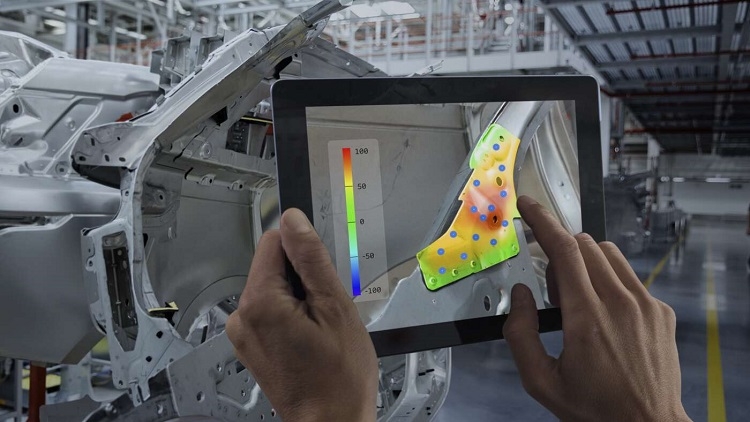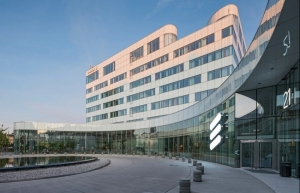5G and factories of the future
 |
| Denis Brunetti, president of Ericsson in Vietnam, Myanmar, Cambodia, and Laos |
As the fastest and most reliable connectivity enabler, 5G will deliver an array of innovative use cases to increase factory capabilities and boost agility, freeing operations from wire-dependency. For the average factory, a large part of 5G’s wireless value will come from the fact that attaching cables to every machine and sensor in a factory is just not viable. This is where 5G will prove to be a game changer. A wireless environment will also make processes smarter and less static, which is increasingly critical in today’s factories.
Intelligent collaboration
Tomorrow’s factory environments will see autonomous mobile robots (AMRs) operating on shop floors, fetching components, removing pieces of scrap, and freeing up workers for more important tasks by taking over less-critical work. Meanwhile, 5G-enabled facilities will benefit from sensors placed throughout, monitoring production processes and collecting data to feed back to machines and production managers. This will greatly enhance the speed of operations, improve maintenance capabilities, and increase safety.
In fact, the extremely low latency and reliability of 5G will mean that, someday soon, many of the machines critical to future factories will become something like non-human colleagues, working closely and seamlessly alongside their human coworkers to assist them throughout their day-to-day processes. Essentially, this means that the era of “collaborative robots” is just on the horizon. And from there, the possibilities will only increase.
Making critical connections
Today, we are already seeing a range of companies opting for cellular connectivity. One such example, Atlas Copco – the world-leading manufacturer of vacuum solutions, generators, power tools, and the like – made a similar step last year, collaborating with us and Orange to bring wireless connectivity and intelligent manufacturing to its Atlas Copco Airpower factory in Wilrijk, Belgium. Several big-name car brands have also joined in, like Mercedes-Benz, whose new, fully networked Factory 5G site near Stuttgart sets new standards in terms of digitalisation, automation and climate efficiency. These companies and others like them recognise the value of seamless communication (both indoors and out, through local and global networks) for enhanced capabilities and greater flexibility.
Our own 5G Smart Factory in Lewisville, Texas, has been recognised by the World Economic Forum as a global front-runner in the Fourth Industrial Revolution. The Forum has awarded the site with its prestigious “Global Lighthouse” designation in recognition of Ericsson’s deployment of next-generation technology at the site and its subsequent impact – including an impressive 2.2 times improved output per employee when compared to a similar site without the automation and Fourth Industrial Revolution improvements.
When compared to a similar site without its automation and 4.0 improvements, the 5G automated factory with connected robots has delivered 120 per cent improved output per employee and 65 per cent reduction in manual material handling. In fact, nearly all the initial training at the 5G Smart Factory was carried out with our teams with almost no face-to-face interaction. They used VR to connect with their colleagues in our other smart factory in Tallinn, over 8,000km away, to receive all the knowledge they have gained since opening their smart factory in 2019.
A research study we carried out together with KPMG reveals that a factory utilising wireless communication has the potential to reap a value equal to an extra $1 per square metre – every single day. Assuming a floor of 10,000sq.m (the smallest that can typically support a factory today), that means nearly $4 million a year in added value.
Monitoring production processes will be much smoother with 5G, improving maintenance capabilities and enabling any failures or problems to be rectified quicker.
 |
| Leveraging AR for Smart Manufacturing |
5G for the future
Leveraging 5G, we could marry remote expertise with virtual collaboration in a single place (an XR canvas) to expand our teamworking capabilities. In the case of manufacturing, for example, 5G could be used in factories to create “digital twins” (or virtual replicas duplicating real physical entities), enabling the simulation of various scenarios and testing processes.
Now imagine, simultaneously working on the same complex product with colleagues in multiple distant locations while everyone sees the result of the work right before their eyes. That is exactly what Ericsson-powered 5G will deliver for UK vehicle battery manufacturer Hyperbat in a proof-of-concept virtual reality digital twin partnership with communications service provider BT and other technology leaders. Here 5G technology will allow design, engineering, and manufacturing experts to cooperate on a 3D engineering blueprint from various locations to impact physical products at the company’s Coventry production complex.
Going forward, this means that with 5G companies would be able to leverage help from experts, for example, without requiring their presence on site – something that would not only reduce travel (and its associated financial and environmental costs) but also accelerate solutions and problem solving while fostering smarter operations overall.
5G will be leveraged by Vietnam, making its factories more flexible and more efficient than ever before. Both now and in the future, the boost in agility and enhancement of operations that advanced wireless connectivity will bring is going to be a critical component in Vietnam’s journey to realise its Industry 4.0 journey.
What the stars mean:
★ Poor ★ ★ Promising ★★★ Good ★★★★ Very good ★★★★★ Exceptional
Themes: Digital Transformation
Related Contents
Latest News
More News
- Businesses ramp up production as year-end orders surge (December 30, 2025 | 10:05)
- Vietjet chairwoman awarded Labour Hero title (December 29, 2025 | 13:06)
- How to unlock ESG value through green innovation (December 29, 2025 | 10:03)
- AI reshapes media and advertising industry (December 29, 2025 | 08:33)
- FPT and GELEX sign deal to develop blockchain tech for global markets (December 29, 2025 | 08:29)
- Vietnam’s GDP forecast to grow by 9 per cent in 2026 (December 29, 2025 | 08:29)
- Women entrepreneurs are key to Vietnam’s economic growth (December 29, 2025 | 08:00)
- Vietnam's top 500 value-creating enterprises announced (December 27, 2025 | 08:00)
- The PAN Group shaping a better future with ESG strategy (December 26, 2025 | 09:00)
- Masan Consumer officially lists on HSX, marking the next phase of value creation (December 25, 2025 | 13:20)





 Tag:
Tag:

























 Mobile Version
Mobile Version